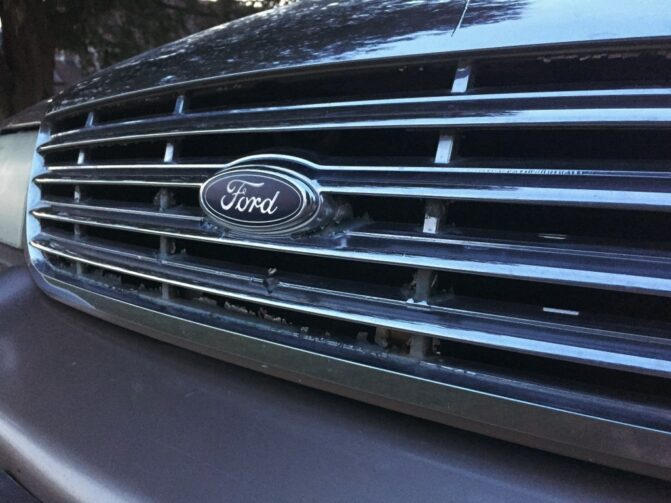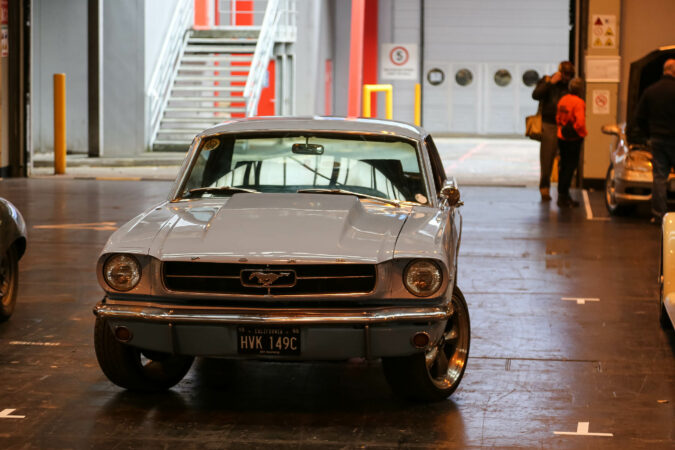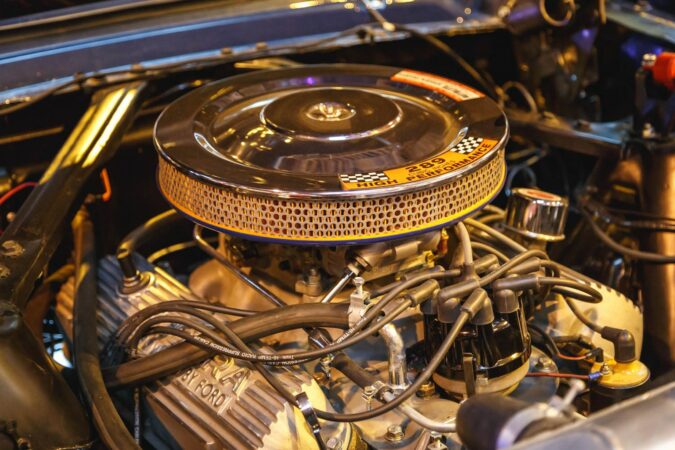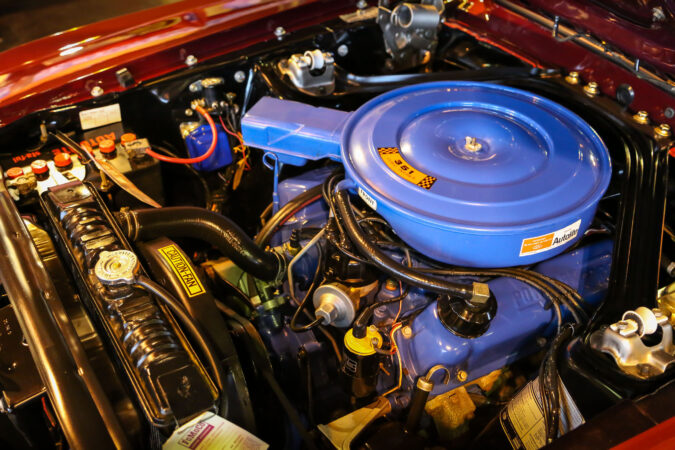Fancy owning a Ford from the 1970s? Or are you just currently obsessed with this particular decade? Whatever the case, let’s talk about the coolest 70’s Ford cars. From muscle cars to wagons, and executive saloons. Here are the grooviest 70’s Ford cars you should know about:
70’s Ford
Before we begin listing 70’s Ford cars, there’s something you should know about the ’70s. We know decades often have nicknames based on cultural revolutions. Such as the “roaring 20s” and “swinging 60s.”
The 1970s was groovy thanks to the emergence of funk, blues, and R&B music. These influenced many things such as fashion and practically gave birth to the hippy movement. It was a groovy decade, for sure. But it was anything but groovy for the American automotive industry.
The ’60s saw the muscle car craze. But thanks to the oil crisis and awareness of environmentalism, muscle car popularity came crashing down almost instantly in the ’70s. Muscle cars were cheap to buy, but with rising gas prices in 1973, it was no longer feasible for many drivers to own a gas-guzzling V8.
There was also a rising concern over air pollution in many cities throughout the States. As a response, the government enacted the Clean Air Act in 1970. This legislation forced carmakers to detune their engines to meet the new emissions regulations.
Unfortunately, with the technology available at the time, there was no way to do this without significantly reducing performance. And with that, the muscle car era was practically over. Many carmakers had to shift their strategy, including Ford. Where they no longer market the Mustang as a pure-bred muscle car, but rather as a fat, heavy, luxury cruiser.
Hang on there, don’t close the tab just yet. Just because the muscle car craze was over, doesn’t mean Ford stopped making muscle cars and other interesting cars in the ’70s. There were still plenty of interesting Fords from the decade. If anything, Ford probably coped best during this rapid change.
From the Mustang to the Thunderbird, let’s take a look at the interesting 70’s Ford cars:
70s Ford Muscle Cars
Despite rising gas prices, emissions regulations, and a shift in consumer preference, Ford kept making muscle cars into the ’70s. The ’60s version of these muscle cars are arguably more interesting, but they’re still worth mentioning. Here are Ford’s ’70s muscle car offerings:
1974 Ford Mustang
Ford introduced the Mustang in 1964. We’re all familiar with this first-generation Mustang, and it remained in production until 1973. However, the 1971 model year was notably different. It still had the same chassis, but the front was much less aggressive in design. Understandable, since they were marketing it as a luxury cruiser rather than a muscle car.
Engine options were also much more limited, but the 429ci (7.0L) Cobra Jet V8 was still available. The new second generation then came along in 1974, and this is where it started to go downhill for the Mustang.
It’s arguably better looking than the 1971 Mustang, And the 2+2 hatchback version actually looks sportier than the coupe variant. However, the base engine was a 2.3L Lima inline-four engine, making just 89 horsepower.
That being said, it was still available with either a 2.8L Cologne V6 or the 302ci (4.9L) Windsor V8. However, thanks to emissions regulations, even the revised 1975 version only had 140 horsepower. And some journalists at the time noted the V8 feel sluggish.
We haven’t been very positive about this car so far. And it’s hard to be so thanks to its underwhelming performance. However, we do like the Cobra II appearance package offered in 1976. This includes a black grille, a hood scoop, a rear spoiler, quarter window louvers, and racing stripes running through the body.
Sure, it was still packing that sluggish Windsor V8. But the “race-y” looks of the Cobra II make up for it. And you’d be lying if you say it doesn’t awaken the inner nine-year-old in you. The second-gen remained in production until 1978, and then Ford debuted the Fox-body Mustang in 1979. Arguably the better-looking car, but it’s more of an ’80s icon.
1970 Ford Torino
The Ford Torino began life as a mid-size car in 1968, available in many configurations. Including hardtop, fastback, convertible, sedan, and station wagon. These options were also available in the 1970 second-generation version, and you can consider the 2-door fastback and hardtop as a muscle car.
Sure, the long hood made it look more like a personal luxury car. But it was a muscle car through and through. The second generation was only in production for two years (1970 – 1971), and this is the one you want as the later third generation is, well, let’s be kind, let’s say it’s aesthetically challenged.
The second-generation Torino was available with five different engines. Including an inline-six, a couple of Windsor V8s, a Cleveland V8, and most notably the 429ci 385-Series V8. The Torino GT is the most expensive version, but the Torino Cobra was the top-performance model.
The Cobra version came with a 4-speed manual, a Hurst shifter, competition-spec suspension, black hood and grille, ‘Cobra’ emblems, and exposed hood latches. Its 1971 version remained largely the same. It had the same engine options and similar trim offerings with the GT being the top trim level. The most notable difference is probably its split-grille.
As mentioned, the third-generation looks rather ugly, so you’ll want the second-generation. The third-gen looks like the Chevy Chevelle’s ugly brother, if you ask me. Anyway, fancy one of these? A running second-generation Torino is now anywhere between $25,000 to $50,000 depending on trim level and condition.
1970 Mercury Cougar
Mercury was an American car maker owned by Ford that went defunct in 2010. Its most popular model was arguably the Cougar, a muscle car based on the Mustang but with a longer wheelbase.
So, technically the 1970 Cougar is a ’60s car, as it was introduced in 1967. But it remained in production until 1970, before being replaced by the less good-looking second generation. So, yes, we’re going to count this as a 70s car.
The first-gen looks amazing and reminds us of the Dodge Charger. It had concealed headlights, and a split-grille, and was available with three different V8s: the Windsor, the Cleveland, and Ford’s FE V8.
As Mercury was Ford’s premium brand, the Cougar was around $280 more than the equivalent Mustang. And a full-option high-end Cougar matches the price of Ford’s luxury cruiser, the Thunderbird.
The most notable version is probably the one from ’69 – ’70, and it had what is arguably the coolest trim name of any car: the Cougar Eliminator.
Think of it as Mercury’s version of the Mustang Mach 1 and the Boss 302 Mustang. It was only available as a hardtop, and the Boss 302 engine was available as an option. Good for 290 horsepower and 290 lb-ft of torque.
Cosmetic upgrades include a body-colored spoiler, black-out front grille, hood scoop, and Eliminator body stripes as well as a Cougar “running cat” badge replacing Mercury’s emblem.
Only about 2,000 of these Cougar Eliminators were ever built, making it quite hard to spot these Cougars in the wild. Most Cougars are on sale for around $40,000. But the Eliminator can fetch twice that in an auction.
70s Ford Station Wagon
Station wagons are a thing of the past now for the United States and most parts of the world other than Europe. Most US consumers nowadays prefer a truck or an SUV if they need something bigger than a sedan.
Anyway, station wagons were popular in the ’70s. As mentioned, the Torino was available as a wagon, but perhaps the most popular wagon was the Ford Country Squire.
It started life as the Ford Custom in 1950. And the Country Squire was a trim name for the wagon version with wood paneling on the side of the car.
The seventh generation was introduced in 1969 and remained in production until 1978. It shared chassis and parts with the Ford Galaxie and Ford LTD line. Its biggest differentiator was the woodgrain paneling, a trademark of the Country Squire name.
View this post on Instagram
It was available with a wide range of V8s, including Ford’s massive 429ci (7.0L) 385-Series V8. However, the 1972 version saw a reduction in power thanks to emissions regulations. It originally had 365 horsepower but dropped to 212 horsepower in 1972. So, if you want the more powerful version, get the 1971 version.
The 1973 version and onwards saw minor exterior changes. And it came with a 351ci Windsor V8 as standard, with the 429ci and 460ci 385-Series V8s available as an option. The 3-speed automatic also became standard.
Interested? You might be able to find one in running condition for around $15,000. But don’t be surprised when a pristine-condition Country Squire fetches over $25,000 in an auction.
Other 70’s Ford Cars
Consumers came to realize those muscle cars were essentially road-going race cars, and safety technology at the time hadn’t kept up with the speed of the muscle cars.
This meant that consumers were now realizing that these road-going race cars are dangerous. Further reducing the popularity of the muscle car, which is why we saw very few muscle cars in the ’70s. And hence why only three of them are on this list.
However, there are other interesting cars from Ford in the 70s, including compacts, trucks, and personal cruisers. Here are ones we think are worth mentioning:
1970 Ford Falcon
The Ford Falcon was a compact car Ford produced from 1960 to 1970. Yes, the North American version seized production in 1970, so it just barely cut as a 70’s Ford car. They did continue production and making new generations of the Falcon up until 2016.
Anyway, the 1970 model year was the third-generation Falcon produced from 1966. Based on the Fairlane, the Falcon was available as a coupe, a sedan, and a station wagon. And the Falcon came with three variants of the Thriftpower inline-six, and three variants of the Windsor V8.
Ford seized production largely to declining sales numbers. Additionally, they weren’t able to make the car conform to new safety standards. And so, the Falcon died in 1970. At least, it died in the US.
Some people will say that the Falcon is technically a Mustang. And you don’t want to say that to the Mustang diehards unless you want to get bullied online. The Falcon and Mustang did share a lot of parts to keep costs down, but the Mustang is by no means a redesigned Falcon.
Ford Bronco
The Bronco was Ford’s first-ever SUV, even though the term ‘SUV’ hasn’t been coined yet at the time. In fact, Ford used the term ‘MPV’ or Multi-Purpose Vehicle to describe the Bronco, which is arguably more accurate.
Anyway, the first generation debuted back in 1966, and the Bronco remained in production until 1996 spanning five generations before it was finally put down due to poor sales.
Ford recently revived the Bronco nameplate, launching both a two-door and four-door version last year after its 25-year hiatus. And we love the new Bronco, mostly because it looks awesome, and somehow has integrated the original retro looks with modern design really well.
Of course, we’re here to talk about the original car. The first generation was produced from 1966 to 1977, and then a second generation was produced for just two years before they launched the redesigned third-generation Bronco in 1980.
The first generation came with a 170ci (2.8L) inline-six as standard. And the same 302ci (4.9L) small block V8 you’ll find in the Mustang was available as an option.
It isn’t quite the cultural revolution that the Mustang, the Jeep, or the Land Rover was. But it was still a great car, popular with farmers and city-dwellers alike. And competing in many offroad races such as the Baja 1000.
The Bronco is now a collectible. And you’ll find most Broncos on sale for at least $45,000. Some classic car dealers are even asking for around $100,000 for a pristine Bronco.
70s Ford Thunderbird
The 70s saw three different generations of the Ford Thunderbird, which was Ford’s flagship personal luxury car. The fifth generation debuted in 1967 and then was replaced by the sixth gen in 1972. And a seventh generation came along in 1977 until 1979.
The sixth generation was arguably the best-looking version of these three. The large cars came with Ford’s 429ci V8 as standard, and a 460ci V8 was optional but then became standard from 1973.
View this post on Instagram
It’s a good-looking car, but it was by no means fast. Ford had detuned their V8s at this point, due to the new emissions regulations. Add the Thunderbird’s enormous weight of about 4,420lbs, and the Thunderbird was not going anywhere quickly.
Still, if you don’t need to go anywhere quickly and you want to arrive in style, you can pick up a ’72 Thunderbird now for around $25,000. You can save $10,000 if you’re willing to drive in a less-than-pristine Thunderbird.
1970 Ford Ranchero
The Ford Ranchero was a pickup truck, although it was a bit different than the trucks that we know today. The Ranchero was based on a mid-size sedan, borrowing its platform from the Torino for the fifth generation (1970 – 1971).
Think of trucks that sit low and are sportier. Hence why it was technically a coupe utility vehicle, rather than a truck. In any case, the fifth generation Ranchero was available with Torino engines, including a 429ci Cobra Jet V8.
View this post on Instagram
A sixth generation came along in 1972, but much like the Torino, it had an uglier front-end this time with a guppy-looking grille up front. And then it died with the seventh generation in 1979, before being replaced by the Ford Ranger.
The Ranchero is a cool little pickup, but it never quite got the same popularity as the El Camino. Perhaps that’s why most pristine Rancheros are around $30,000. While the El Camino can fetch nearly $50,000 if it’s in showroom condition.
Ford Pinto
Unlike the rest of the cars on this list, the Pinto is more infamous than famous. If there was a list of infamous 70’s Ford cars, the Pinto would top it. But no 70’s Ford list would be complete without mentioning the Pinto.
The Pinto was Ford’s first-ever sub-compact car. It’s not what you’d call remarkable, but it did the job.
Lee Iacocca saw the need for a small and fuel-efficient car two years before the oil crisis hit the States. And so, the Pinto was born, and with its small engine, it was the right car for the fuel crisis. It’s also a response to the flood of small and fuel-efficient Japanese automobiles that started to become popular.
The Pinto was flawed mainly because of rushed production. And there were many—and sometimes fatal—design flaws. Most notably, a gas tank that has very little structural support and is prone to rupture.
Ford decided not to do anything about it simply because of cost-cutting. They estimated that it was going to be cheaper to pay for damages in court, rather than to recall the Pintos and modify its fuel system. Other issues include accelerator problems, and gas vapors entering the air filter which increases fire risk.
The most notable incident was in 1972 when a Pinto was rear-ended by another car. The gas tank ruptured, and the car went up in flames, taking the life of a woman inside the car. And severely disfigured another in the car.
Despite all this, the Ford sold over 2.5 million Pintos. And now you can pick one up for around $15,000. Roughly the same as its original MSRP when adjusted for inflation.
1970s Ford Cars – Facts:
- The 1970 Ford Falcon was the last model, and its name was transferred to a stripped-down Torino base.
- The 1970 Torino Cobra was a SportsRoof hardtop, included a 429cid V-8 with a shaker scoop hood, and cost $3,270.00.
- The 1970 Ford Maverick was advertised as “the first car of the 70’s at 1960’s prices” and was only offered in a V-6, costing $1,995.00.
- The 1970 Ford Mustang Boss 302 was only offered in a fastback, boasting a 290hp, 302cubic inch engine, and cost $3,271.00.
- The 1970 Ford Ranchero used the Torino base and was known as the “urban pickup” and cost $2,739.00.
- The 1970 Ford Thunderbird lost the hidden headlights to get a new bird-beak-type grill and exposed headlamps, costing $4,961.00.
- The 1971 Ford Mustang two-door hardtop was both the price and sales leader of the Mustang lineup, costing $2,721.00.
- The 1971 Ford Mustang Mach 1 featured Ford’s biggest engine, the 429 Cobra Jet, and could do 0-60mph in as little as 6.5 seconds, costing $3,185.00.
- The 1973 Ford Bronco was the first American “sport utility” type vehicle and got the popular SelectShift Cruise-O-Matic transmission, costing $3,760.00.
- The 1979 Ford Mustang was chosen as the pace car for the Indy 500, with 11,000 replicas being sold, and costing $3,925.00.
FAQs About 70’s Ford Cars
Answers to common questions about 70’s Ford cars and Ford in general:
What Cars Did Ford Make In The 70s
Ford made a lot of cars back in the 1970s, almost to the point where it’s just confusing to keep up. And it’s no surprise as car companies tend to make as many cars as possible to fulfill the market demand and carmakers were endlessly trying to out-do one another. Some of the most notable models are the Mustang, the Torino, the Bronco, and the Ford Country Squire.
What Brand Does Ford Own
Nowadays Ford only owns Lincoln, which serves as their luxury car brand division. They also had the Mercury brand back in the 70s, which was also a premium brand from Ford. But due to poor sales, the brand died in 2010. Mostly because customers preferred to own a Ford rather than Mercury.
Which Auto Brand Is Made By Ford
Lincoln is now the only subsidiary of Ford. And Lincoln uses Ford’s platforms and shares parts with its Ford counterpart, such as using the same infotainment system. However, Lincoln cars have a more upscale styling and interior to justify their premium price tag.
What Was The First Ford Car
Ford’s first car was the Model A, built in 1903. Meanwhile, the much more renowned Model T was built in 1908. Even though it wasn’t the company’s first car, it was the company’s first mass-produced vehicle and Ford sold 15 million of them before production ceased in 1927.
How Much Is A Ford Car
Back in the 70s, most Ford cars cost around $5,000. And some more affordable models, such as the Ford Falcon, were around $3,000. Or about $23,000 when adjusted for inflation. Nowadays most Ford models cost around $30,000 on average.
What Is The Best Car Ford Ever Made
The Mustang is probably Ford’s greatest creation. It’s powerful, it was affordable, and is one of the most iconic cars ever made. But there are other contenders for this, such as the Model T, the car that revolutionized the automotive industry. And the Ford F-150, arguably the best truck of all time.
70’s Ford Cars: Final Thoughts
So, those are some of the best and most fascinating 70’s Ford cars from the groovy decade. While it wasn’t a great decade for the American automotive industry due to the oil crisis, emissions regulations, and an influx of Japanese and foreign cars, Ford still made some interesting cars.
Admittedly, it wasn’t my favorite decade for American car design. I find that 1960s and 1980s styling is better and cooler. The ’60s had some of the coolest cars ever made, while the ’80s had some of the sportiest and charming-looking cars, such as the Fox-body Mustang.
That being said, the ’70s gave birth to good-looking cars as well. My personal favorites are the second-gen Bronco, the Falcon, and yes, the Mustang II Cobra II. Sluggish as it may be, it was still a cool car to look at.
What are your favorite Ford cars from this decade? Do you find any of these interesting, or even desirable, perhaps? And now you find yourself wanting one quite badly? Or maybe did we miss something on this list? Let us know in the comments!




